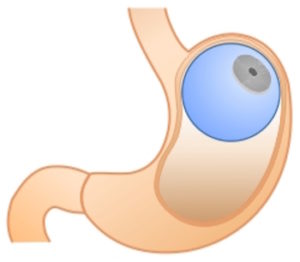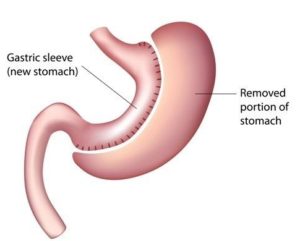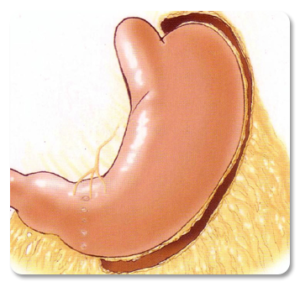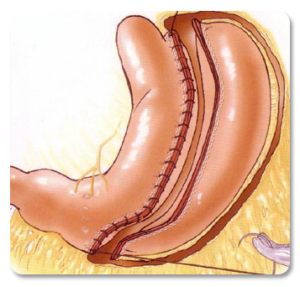
Obesity: Overweight and Obesity are defined as abnormal or excessive fat accumulation that may impair health.
The fundamental cause of obesity and overweight is an energy imbalance between calories consumed and calories expended. Modern lifestyle promotes Obesity in many ways.
Minority of cases is due to medical causes such as endocrine system malfunctions and a few have genetic cause for Obesity.

Allurion’s flagship product—the Elipse Balloon— is a procedureless™ gastric balloon. The Elipse Balloon fills the stomach and assists you in feeling full and eating less. The Elipse Balloon is swallowed during a brief office visit and – months later – passes into the toilet.
The Elipse Balloon empowers overweight and obese individuals (and their healthcare providers) to reclaim their health with a safe and effective weight loss tool.



on the centre of the elipse software is a smooth balloon that is positioned in your belly. the balloon is swallowed during a 20-minute appointment, and neither placement nor elimination of the balloon requires surgical operation, endoscopy, or anaesthesia. with the help of your care group and the sense of fullness created by your balloon, you can change your ingesting behavior and reclaim manage of your health.
The elipse balloon creates a constant feeling of fullness, allowing you to devour much less without the starvation that accompanies most diets.
Intragastric balloon is an inflatable medical tool this is quickly positioned into the stomach for a most of 6 months to lessen weight. it's miles advertised to offer a weight reduction choice in decided on sufferers while food regimen and exercise have failed and surgical operation isn't desired or no longer encouraged. The process is carried out as day case underneath trendy anesthesia.
The key to success with Intragastric Balloon is the follow up that is part of the Intragastric balloon programme. This program is designed to change eating behaviour that works even after the balloon is removed in 6 months.

An Initial Endoscopy of the Esophagus, stomach and the first part of the Duodenum is carried out to ensure there is no abnormality. Afterwards, the Intragastric Balloon is placed in the stomach and filled with a blue solution (Methylene Blue.) If there is any leak, patient will notice a greenish blue colored urine approximately 60 mins after the leak. The Intragastric Balloon can be blown up to a volume between 400 to 700 cubic centimetres.
This is decided during insertion depending on how overweight the patient is and the size of the stomach.
The Intragastric Balloon can be used for 6 months and not recommendable to use it for longer as the stomach’s gastric juices can weaken the balloon and cause leakage.

Primary Obesity Surgery Endoluminal, or POSE procedure, is an endoscopic incisions weight loss procedure that reduces the size of the stomach and helps to diminish hunger cravings. This is primarily designed for patients who want to lose between 25 and 60 or 70 pounds, rather than standard bariatric surgery patients who need to lose 100 pounds or more.
The procedure is performed entirely through the mouth and does not require any external cuts into the body. It is generally an outpatient procedure (about 1 hour), with most patients making a quick return to normal activities (only a few days to a week, depending on the individual.)
POSE procedure may be an ideal solution for people with excess weight who have not had success with diet and exercise and who do not qualify or do not want to undergo a more extensive type of bariatric surgery.
POSE is a type of weight loss procedure that restricts eating and reduces hunger by reducing the size and capacity of the stomach by folding and anchoring the stomach tissue.
The multiple folds of stomach tissue created by the POSE procedure effectively reduce the size and capacity of the stomach to limit food intake and diminish hunger cravings.
The POSE procedure is performed using endoscopic “through the mouth” techniques on an outpatient basis under general anaesthesia and the procedure takes at least 30 to 45 minutes. Doctors use the Incisionless Operating Platform (IOP), a specialised set of endoscopic surgery tools and an endoscope (flexible tube with a small camera on the end) to visualise the stomach. The IOP and endoscope are passed through the mouth and into the stomach.
Once in the stomach, the IOP tools are used to grasp, fold, and fasten together sections of stomach tissue. The POSE procedure involves making multiple stomach folds and securing them with expandable suture anchors. The suturing technology was designed by USGI Medical researchers as a durable option for anchoring tissue in the stomach and GI tract.
The majority of POSE patients are able to leave the hospital the same day that the procedure is carried out. Patients who have travelled from out of town for the procedure can generally fly home the next day.
Sleeve Gastrectomy is a weight loss procedure which involves reducing the size of the stomach to about a volume of 120 to 150 ml. The surgery is carried out laparoscopically using small keyhole incisions. The stomach is stapled and cut at the same time using a stapling device and sutures are applied to reinforce the staple line to minimize the chances of a leak.
Weight loss following sleeve gastrectomy occurs due to several reasons:

There are numerous other benefits from this operation that can improve the health of the person in remarkable ways. In some cases, resolution of co-morbidities is well-established following Laparoscopic Sleeve Gastrectomy.
An analysis of several clinical studies, with a follow-up period of one to five years, has found that:
The operation is performed by laparoscopic surgery (Keyhole surgery) using four to five small incisions of 5 mm to 10 mm on the abdomen.

The stomach is stapled with a calibration tube inside to ensure a residual volume of 120 to 150 ml.

The staple line is oversewn to reinforce the staple line and the attachments of the stomach as restored. The rest of the stomach (around 60-70% is removed through one of the keyholes. The removal of the upper part of the stomach fully is a key step in the procedure that results in the reduction of the hormone Ghrelin.

This is decided during insertion depending on how overweight the patient is and the size of the stomach.
The Intragastric Balloon can be used for 6 months and not recommendable to use it for longer as the stomach’s gastric juices can weaken the balloon and cause leakage.
Gastric bypass surgery makes the stomach smaller and allows food to bypass part of the small intestine. You will feel full more quickly than when your stomach was its original size. This reduces the amount of food intake and thus the total number of calories consumed. Bypassing part of the intestine also results in fewer calories being absorbed resulting in weight loss.

In a Roux-en-Y procedure, a small stomach pouch is created which reduces the amount of food you can eat. The smaller stomach is connected directly to the middle portion of the small intestine, bypassing the rest of the stomach and the upper portion of the small intestine.
The Mini Gastric Bypass procedure, is a modification of gastric bypass and has just one anaplasmosis ( Joint) and is, therefore, simpler to perform. The effects of both procedures on weight loss and other co-morbidities are nearly the same.
In our practice, we tend to reserve the Gastric Bypass for patients whose BMI is greater than 50 and associated with major co-morbidities especially Long-standing Type II Diabetes Mellitus.
The patient will be admitted to the hospital at least 3 hours prior to surgery time and is expected to stay Overnight.
The surgeon will make a series of small incisions in your upper abdomen, through which he will pass fine laparoscopic instruments and a camera. The expected length of surgery is around 2 hours.
When the patient is able to drink at least 2 litres of warm water in a day, Pain is under control and patients’ clinical condition is stable, It’s time to go home. You are encouraged to be mobile to accelerate recovery process and most patients are back to work 7 days after Laparoscopic Gastric Bypass.
Some patients may experience nausea or vomiting but medication is given to rectify this promptly. Some discomfort and limited mobility are also to be expected but prescribed medication is available to control this. You can be assured of immediate care and attention at all times.
A well structured dietary guideline is designed to be strictly followed after the Surgery. Patient must stick to a liquid-based diet for 2 weeks after surgery. A soft diet follows for a further 2 weeks and about 4 to 5 weeks after the surgery, patient graduates to a 600 to 800 per day solid diet.
`